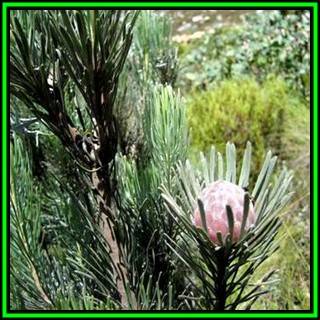
Leucadendron album Seeds - Endemic Shrub Protea Evergreen Cut Flower Fynbos - New
Check my rate
| Main centres: | 1-3 business days |
| Regional areas: | 3-4 business days |
| Remote areas: | 3-5 business days |

| Main centres: | 1-3 business days |
| Regional areas: | 3-4 business days |
| Remote areas: | 3-5 business days |
Leucadendron is a South African endemic genus in the Protea family, Proteaceae. The genus consists of about 80 species of evergreen shrubs and small trees. They are a prominent part of the fynbos ecoregion and vegetation type. Most species are shrubs that grow up to 1 m tall, some to 2 or 3 m. A few grow into moderate-sized trees up to 16 m tall. The leaves are spirally arranged, simple, entire, and usually green, often covered with a waxy bloom, and in the case of the Silvertree, with a distinct silvery tone produced by dense, straight, silky hairs. This inspired the generic name Leucadendron, which literally means "white tree". The flowers are produced in dense inflorescences; they are dioecious, with separate male and female plants. The seed heads, or infructescences, of Leucadendron are woody cone-like structures. This gave rise to their generic common name cone-bush. They are prized for their exotic-looking attractive flowers, cones and foliage. Leucadendron blossoms make excellent cut flowers, keeping their gorgeous red, burgundy, green or yellow color for up to three weeks. In the garden they do well in rockeries and also make excellent feature plants.
Leucadendron album commonly known as Linear-leaf Conebush in English and Aarbeisilwertolbos in Afrikaans is an erect, evergreen, silvery shrub with a neat habit, 1.5-2.0 m tall. It grows from a single basal stem. It has lush silver foliage. The leaves are linear to linear-oblanceolate with short, silvery hairs. The male and female flowers are on separate plants. The involucral bracts which surround the flower head are larger than the leaves and are longer than the flower head. Flowers are yellow and have a faint, but pleasant smell. Flowering time: December. An unusual conebush, with its velvety silver foliage, Leucadendron album is a striking mountain fynbos shrub. These silvery shrubs make great foliage plants in dry, well-drained fynbos gardens. They can be used as a mid-layer planting to create interest and contrast in texture and colour.
|